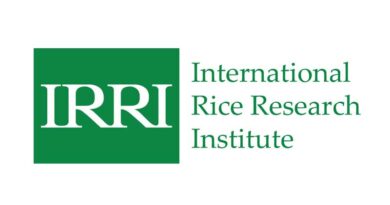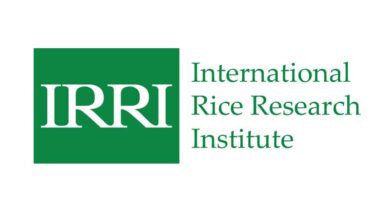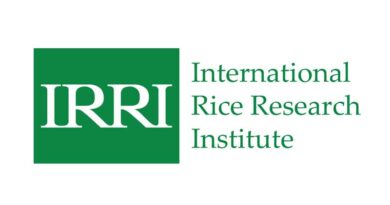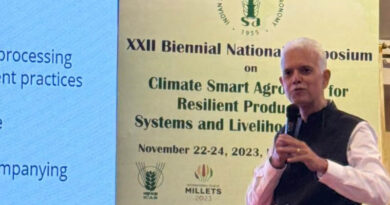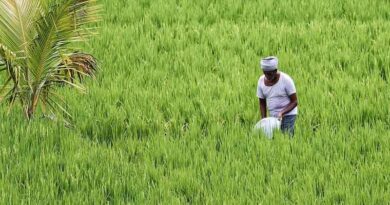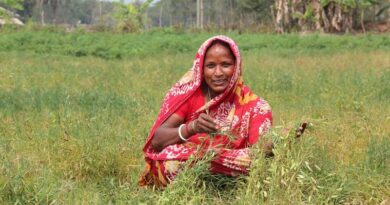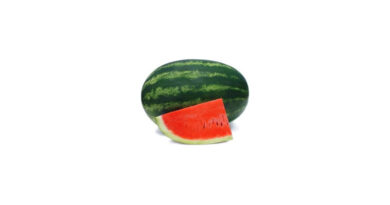Vibrant and dynamic seed sector in India: Key highlights, challenges and opportunities
Guest author: Dr. Kuntal Das, Senior Specialist, Seed System & Product Management (Rice Breeding Innovation Platform), International Rice Research Institute, South Asia Regional Centre (ISARC), Varanasi, Uttar Pradesh, India
02 June 2022, New Delhi: Seed is the most fundamental and critical input for sustainable agriculture, serving as a link between the present and the future. India has developed as a vibrant seed sector on a worldwide platform, and the seed industry had developed and expanded in progression with Indian agriculture throughout the years.
Beginning with the tradition of preserving seeds from previous crops, Indian farmers have proceeded to develop a robust formal, informal, and integrated seed system across the country. Formal seed system diversity has become progressively refined over the time. There have been substantial changes observed in Indian seed sector, particularly in the last 30 years.
The government’s policy assistance has also aided in the evolution and development of the seed platform and is indicative of India’s changing requirements and market dynamics. The public research bodies (eg. ICAR: Indian Council of Agricultural Research) along with international institutes (eg. CGIAR: Consultative Group on International Agricultural Research) contributed immensely with new improved seeds of diverse crops. Given the importance, not just for farmers but for entire society, seeds are now subject to a growing number of regulations aimed at achieving various policy goals. The challenge for policymakers is to develop laws and regulations that promote both formal and farmer-based seed systems while minimising detrimental effects on breeding, selection, and seed production in either system.
The private seed sector having a significant impact on the Indian seed industry. This has been made possible due to international investment and specific technical skills. Indian seed corporates and multinational companies in the Indian seed sector brought in a strong R&D base for product development, with a focus on high-value hybrids of cereals and vegetables, as well as improved technologies like such as Bt cotton. As a result, farmers have a wide range of products to choose from, and the seed industry is now oriented toward a ‘farmer-centric’ and market-driven approach.
Prominent seed policy and initiative milestones in India:
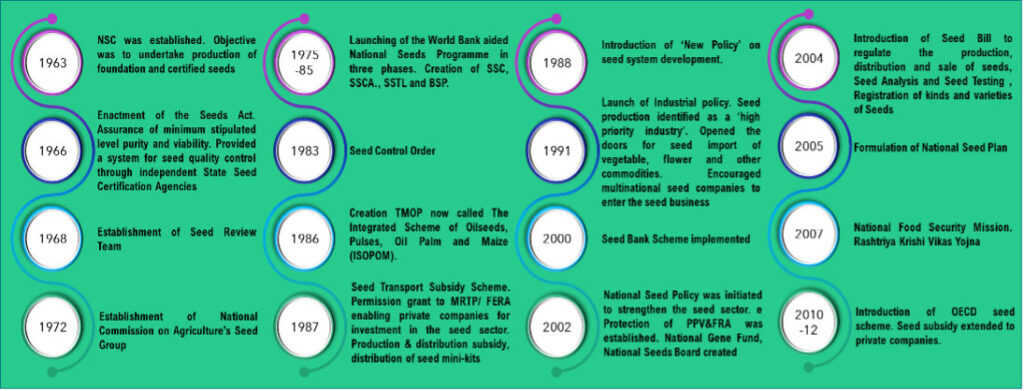
(NSC=National Seed Corporation; SSC=State Seeds Corporations; SSCA=State Seed Certification Agencies; SSTL=State Seed Testing Laboratories; BSP=Breeder Seed Programmes; TMOP= Technology Mission on Oilseeds & Pulses; MRTP=Monopolies and Restrictive Trade Practices); FERA=Foreign Exchange Regulation Act; PPV&FRA=Protection of Plant Varieties & Farmers’ Rights Authority; OECD=Organization for Economic Co-operation and Development)
Status of Indian seed sector:
The expansion of the seed sector in due course can be compared to the expansion of India’s agricultural productivity. After the United States (27%), China (20%), France (8%), and Brazil (8%), Indian seed sector is now the world’s fifth largest seed market, accounting for 4.4% of global seed market (6%). Non-vegetable crops such as corn, cotton, paddy, wheat, sorghum, sunflower, and millets account for the majority of the Indian seed market. India is practically self-sufficient in flower, fruits and vegetables, and field crop seeds in terms of worldwide trade. In the next five years, paddy, maize, and vegetables are likely to fuel the growth of the Indian hybrid seed sector. The Indian seeds market reached a value of US$ 3.6 billion (Rs. 36000 lakh) in 2017, growing at a CAGR of over 17% from 2010 to 2017, and is predicted to rise at a CAGR of 14.3% from 2018 to 2023, reaching a value of more than US$ 8 billion (Rs. 80000 lakh).
Seed production system in India:
The Indian seed multiplication programme primarily adheres to the limited generations concept. The system justifies three generations of seeds: breeder, foundation, and certified seeds, and offers sufficient quality assurance measures in the seed multiplication chain to ensure that the varietal purity is maintained as it passes from the breeder to the farmer. State Departments of Agriculture (DoA) collect seed indents from various production agencies and send them to the Department of Agriculture and Cooperation (DAC), Ministry of Agriculture, Government of India, which compiles the information crop by crop and sends it to the Project Coordinator/Project Director of the respective crops in ICAR for final allocation of production responsibility to various State Agricultural Universities/ICAR institutions. The NSC, State Farms Corporation of India (SFCI), SSC, State Departments of Agriculture, and private seed producers have been tasked with producing foundation seed possessing the necessary infrastructure. Certified seed production is managed by the SSC, Departmental Agricultural Farms, Cooperatives, and other organizations. State governments are primarily responsible for the production and distribution of quality/certified seeds.
Seed Replacement Rate (SRR) of major crops in India:
SRR is the percentage of crop sown/planted in the season using certified/quality seeds other than farm saved seed. As a result, SRR has a direct impact on productivity and income enhancement for farmers and is one of the means for doubling farmers’ income.
Varietal Replacement Rate (VRR) of major crops in India:
VRR is an important factor in increasing crop productivity. The rate of progress in food production is largely determined by the progress of seed programmes that can supply high-quality seed of high-yielding varieties with superior genetics. According to recent data, wheat had the fastest rate of VRR across all crops, followed by mungbean, chickpea, soybean, rapeseed & mustard, rice, and pigeonpea.
Varietal protection in India:
India is a member of the World Trade Organization (WTO), which has a half-dozen inter-governmental agreements influencing the agriculture directly. India established the Protection of Plant Varieties and Farmers Rights (PPV&FR) Authority under the Protection of Plant Varieties and Farmers Rights Act, 2001, in accordance with the Trade-Related Aspects of Intellectual Property Rights (TRIPS) agreement, and it has been operational since November 11, 2005. Establishment of PPV&FR was necessary to have an effective system in protecting plant varieties, farmers’ and plant breeders’ rights, and encouraging the development of new plant varieties.
Seed certification system in India:
In general, seed certification is a process for ensuring the physical identity and genetic purity of notified crop varieties by maintaining and making available to the general public with a continuous supply of high-quality seeds and propagating materials. Seed certification is a legally recognised system in India for ensuring the quality of seed production and multiplication. In 1970, Maharashtra became the first state to establish an official Seed Certifications Agency (SCA) as part of the DoA, while Karnataka became the first state to establish an autonomous SCA in 1974. Under the Seed Act of 1966, 22 states in the country now have their own SCA. Seed certification is voluntary in most countries around the world, including India, while labelling is mandatory.
Key challenges of seed sector in India:
Short shelf life of the seed: Certified seeds are only good for one season and must be revalidated before being used in the following season. The retailers do not have the necessary arrangements to store the seeds for an entire year.
Unpredictability of the demand: Due to the unpredictability of nature, changes in commodity prices, and other factors, it is extremely difficult for dealers (private or cooperative) to accurately predict demand for certified seeds.
Lack of effective monitoring mechanism: At the point of sale, there is no effective monitoring system in place to control seed quality. Once the product is sold, the seed producing, and marketing agencies have no control over their production.
Lack of infrastructure: Farmers’ access to seeds at the right time continues to be a challenge. Poor infrastructure in remote villages, a lack of purchasing power at the time of sowing, and the uncertainty of rainfall, on which sowing is heavily reliant, exacerbate the problem.
Poor extension services: The agriculture department with various extension services leave a lot to be desired in terms of the effectiveness of the programmes they offer for popularizing modern agricultural practices, including improved seed practices. However, extension functionaries are generally seen as active only for the purpose distributing mini kits and conducting field demonstrations, rather than emphasizing the results-oriented approach for effective impact.
Key opportunities to strengthen the seed sector in India:
- India’s share in global seed exports is about 0.6 % (ISF, 2012). To give a boost to seed export, India decided to participate in OECD seed schemes in five categories viz., grasses and legumes; crucifers and other oil or fibre species; cereals; maize, sorghum and vegetables.
- Future of agricultural production will largely depend upon development of improved varieties/ hybrids of various crops, supported by efficient, cost-effective seed production technologies.
- Diversification of areas for seed production and development of appropriate seed production technology needs to be focused for expansion of seed production system in the country.
- Considerable efforts should be made to study the effect of climate change on seed production of various crops to develop suitable crop management technologies and mitigate the adverse effects.
- Since seed is starting point of production systems, organic seed (production technology, field and seed standards) is inevitable for location specific, producer community based organic agriculture.
- GPS/GIS applications includes guidance of equipment viz., micro irrigation facilities, fertilizer/ pesticides applicators and tillage implement; mapping of pests and diseases to reduce excess overlaps and skips and enable towards precision in seed production
- Different seed testing protocols currently used in India need to be upgraded on the lines of international standards of seed testing such as ISTA, AOSA and OECD for better seed quality assurance and easy access to international seed trade. Use of biochemical and molecular markers including electrophoresis of proteins, isoenzymes and DNA fingerprinting involving first and second-generation markers for establishing the distinctiveness of varieties may supplement traditional genetic purity testing.
- Genomics should be undertaken to discover gene/s governing dormancy, germination and longevity and stress tolerant genes to produce superior quality seeds.
- Seed morphology and vigour (apart from germination, desiccation tolerance and longevity) during the maturation stage, chlorophyll presence on seed has a direct link to maturity and can be fast but precisely measured through image analysis.
- Development of ultramodern seed processing and storage technologies like thermal seed processing facilities (high precision, high throughput process)
- Polymer-based technology used for controlling the time of seed germination through seed coating. By coating the seeds with Intelimer polymers that have required pre-set temperature switch mechanism, the time of germination of the coated seeds can be adjusted and the synchronization problem of parental lines in hybrid seed production could be prevailed over. Besides, this technology also helps in relay cropping system.
- Seed treatment with carbon nano tubes (CNTs), array of nano particles (gold/silver/borates) is a whole new field, yet to be fully unraveled. Application of Nanotechnology in seed science research is still at nascent stage, and its full potential is yet to be tapped.
- Application of biological agents to crop seeds have focused on root colonizing bacteria, termed rhizobacteria. PGPR (Plant Growth Promoting Rhizobacteria) comprise those rhizobacteria that include beneficial effects on plants during colonization by promotion of plant growth and biological control of plant diseases.
- Seed sector has a two-fold responsibility in the area of seed health: to deliver sufficiently healthy seed to farmers and seed producers, and to respect international phytosanitary regulations.
Conclusion:
Indian seed industry adapting at a faster pace to the country’s changing food consumption dynamics. However, in the last three decades, the proportion of income spent on food has decreased in both urban and rural areas. Between 1990 and 2010, cereal and pulse consumption fall significantly, while fruit and vegetable consumption nearly doubled. The country will see an increase in the cultivation of vegetables and fruits, owing to the growth and development of the food processing industry, as well as changing consumer habits. Because of increased consumer awareness and disposable income, one of the most significant future developments will be an increase in demand for high-quality vegetable and fruit products.
The export sector is also expected to grow. Protected cultivation will become more common in India as a result of this trend. Due to labor shortages, the current seed industry may need to develop new products/ technologies to keep up with the increased mechanization of India’s agriculture sector in the near future. Hybrid seeds are expected to become more popular in the country’s future seed market. Another anticipated change in the seed industry is an increase in demand for varieties with higher nutritional and health benefits. Obesity, diabetes, malnutrition, and other lifestyle-related diseases are on the rise in the country, and as a result, people are becoming more health-conscious, which will lead to increased consumption of fruits, vegetables, and cereals with higher nutritional values.
Also Read: UPL’s Winero and Bionse to help solve MRL related hurdles for grape farmers


